Today, December 5, 2010, would have been my mother Resia Schor’s 100th birthday. This is not just a nostalgic realization looking back at a deep past, as it was for me in 2004 which was my father Ilya Schor‘s centennial: he had died in 1961 so forty-three years separated his death from his centennial. My mother died only four years ago, nine days before her 96th birthday. So 100 wasn’t such a stretch. But she had no wish to make it to this landmark. “God forbid!” she said when at one point I explained to her that if she lived to but also died in 2010 I wouldn’t have to pay any estate taxes (an amusing conversation in the light of this week’s disgraceful actions in Congress!). She had retained her excellent memory, her very left politics, her judgment of people unblurred by sentiment, and her courage intact, but when the encroachments of age threatened her independence and her ability to work, she had had enough. When my friend Tom Knechtel said goodbye to her after a visit to Provincetown in the summer of 2006, he said, “I hope I see you here next summer.” “I hope not,” she answered, flashing a beautiful smile.
When I began A Year of Positive Thinking I said that it posed the challenge to myself to find contemporary art that I love but that I would also write about significant artworks, films, and political actions and speech from the near and the deep past that have given me the courage to become and continue to be an artist and an activist. No artists are as important to that personal history as my parents Ilya Schor and Resia Schor.
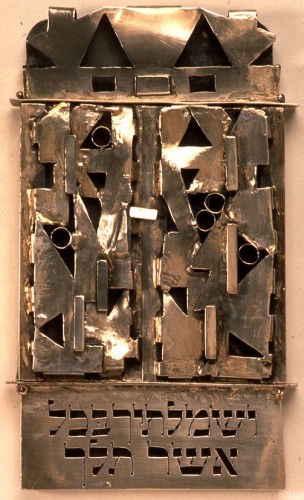
Resia Schor, Mezuzah, 1985, silver, c.5″x4″x1″
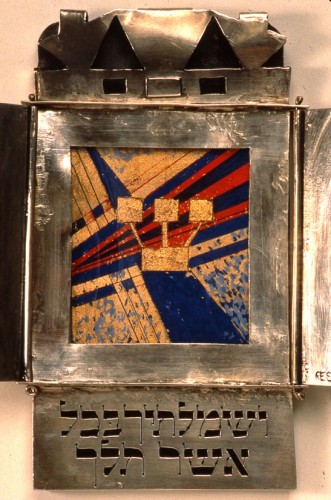
Resia Schor, Mezuzah, 1985, detail, doors open: gouache and gold leaf on paper
When I was a teenager, my mother and I mostly lived alone together. My father had died and my sister Naomi was living away from home, at graduate school and then in Paris. Whatever the tensions that my adolescence and the grief and loss we both held inside our individual hearts imposed on us were tempered among other things by how much I loved the work in silver and gold that she had turned to in order to support my sister and me. I was a fan of her work, and I now sometimes think that if I gave her one thing it was that enthusiastic support.
In the 1950s in New York, she painted and exhibited abstract gouaches in a style reminiscent of Philip Guston. When my father died, she was fifty years old and had two daughters, eleven and seventeen years old. She had no other family. It never occurred to her to look for another man to help her support her children although it was the logical or the more traditional solution to her perilous situation. Instead, figuring that she couldn’t make a living from painting, she took up the tools of my father’s trade as a silversmith, jeweler, and creator of Judaica, transferring her abstract, modernist aesthetic from the soft medium of paint (and the arena of “high art”) to the hard medium of precious metal that challenged her forms in a more powerfully creative direction (though in the area of “craft” as defined by American art at the time).
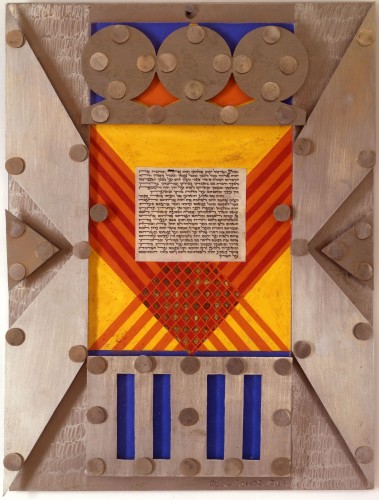
Resia Schor, Mezuzah, 1983. White metal, Plexiglass, gouache on paper, 12″x9″
My mother was a modernist through and through, unlike my father for whom modernist abstraction was a visual language he could speak articulately but it was not his mother tongue: he had deep roots in the philosophical but also the visual traditions of Hasidic folk culture going back to the Middle Ages and it was his unusual gift to carry these into the twentieth century.
Some of my aesthetic and political point of view was formed in these early experiences of art in my home. The curious and problematic thing was that the essence of modernist abstraction was conveyed by her work, but in a form that was generally considered a lesser modality: that of small scale and craft. Yet each piece was so obviously a sculpture.
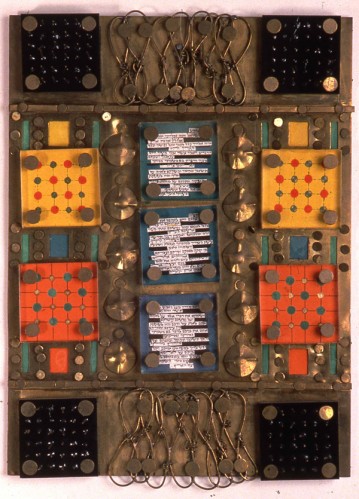
Resia Schor, Fragmented Mezuzah, 21976. Brass, Plexiglass, gouache on pape with Mezuzah text, c. 12″x6.5.” In a radical and iconoclastic geture, my mother took the mezuzah and turned it inside out, revealing and cutting into small fragments the samll talismanic text that had always been hidden and not to be touched by a woman.
That my mother as a person had sought economic survival through her own aesthetic labor was already a lesson in feminism for me and my sister. And, as she developed her own style and techniques in her new medium, it became intriguingly clear that my parents’ work embodied a strangely crossed gender art message that in itself contributed to my sister Naomi and my involvement with feminism and perhaps too to the slightly unusual flavor of our feminist outlook. Inasmuch as art movements are gender coded, my father’s work — folkloric, figurative, narrative, Jewish, delicate, light in weight — carried a feminine code. My mother’s work, abstract, muscularly sculptural although still relatively small in scale but heavy in weight carried a code that would seem to be masculine, as those terms are used.
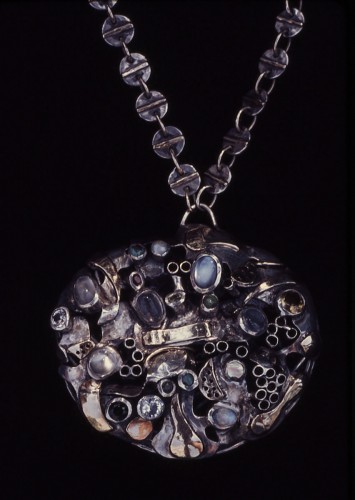
Resia Schor, The Moon, 1967. Pendant, silver, gold, precious and semi-precious stones, c.3″x2.5″
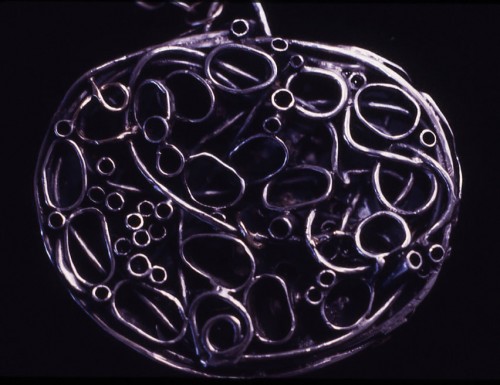
Resia Schor, The Moon, back
When potential customers came to visit, there would be the ritual of showing the work: she would gradually open one case and soft pouch after another, unwrap little tissue paper packets, laying out gold and silver pendants and pins studded with sapphires, emeralds, and rubies, heavily sculpted silver Mezuzahs, chains whose silver and gold links and blue African blue glass beads made from ground lapis lazuli tinkled softly, and earrings made with ancient beads from “Roman excawations.” At the end of the unveiling, a profusion of treasures would cover the coffee table in our living room. I never tired of seeing the work and better yet of handling it, wearing it, sculptural, glowing, deeply satisfying as an aesthetic experience that was tactile as well as visual. Her rings in particular became part of my identity.
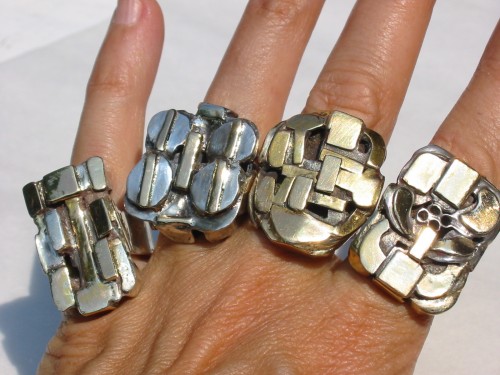
Resia Schor, silver and gold rings from the 1980s to the 2000s
I also loved to watch my parents at work, in the small “maid’s room” of our Upper West Side apartment. When my father was a teenager, before he went to The Academy of Fine Arts in Warsaw, he had been apprenticed in a kind of medieval guild practice as an engraver and goldsmith, and his gestures at work, with metal as with gouache and brush, were light and deft. My mother had watched him work, she claimed he had taught her some basic skills. After he died she took one course in soldering, but basically she taught herself to make her own work. But her body language at her work was different than his, more determined, she radiated an intense and physical absorption.
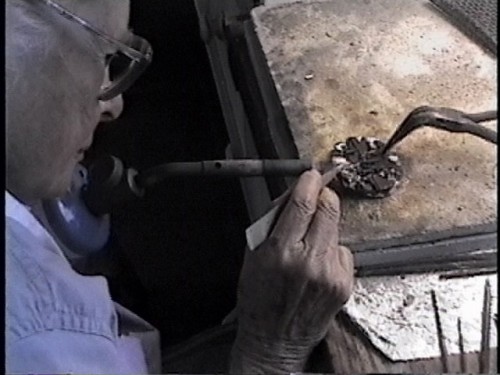
Resia Schor, soldering, summer 2002. Video still from Mira Schor, “The Tale of the Goldsmith’s Floor,” 2003
When my mother was about 8 years old, spending the summer at her grandparents’ house in a small village near Lublin, in Poland, there was a fire next door, always a dangerous event, but all the more so in a small rural community of wooden houses in the early years of the twentieth century. Left alone, as the aunt who was in charge of her ran out with her own small children, my mother decided to save the bedding, so she tied all the pillows up into a sheet, and got her bundle and herself out of the house. Later they could not untie her knot.
This story always seemed metaphoric and predictive of my mother’s strengths and abilities. She was courageous and had presence of mind: when, as she sat with my father and friends in a café in Paris in May 1940 and saw French peasants from the East pushing their belongings and their elderly relatives in wheel-barrows through the streets of Paris, with their livestock in tow, she understood that she, my father, and their friends, poor Jewish émigrés, must leave at once and so, early the next morning, they fled, with only a few lumps of sugar and a change of underwear, a day ahead of Hitler’s army.
English was the fifth language she learned, after Polish, Yiddish, Hebrew and French: when I was at summer camp, she once wrote to me “I love you with all my hearth.” One of the important images of my adolescence is of my always very elegant little mother wearing goggles, hair covered in a dirty bandana, face blackened by metal dust, carbon, and red metal polish, wielding a gas-powered torch over a gas burner on our kitchen stove to solder her large silver mezuzahs. Vulcan’s sister at a domestic forge.
The heat of that unquenchable fire inhabits a recurrent dream I have had for many years that the burners on my stove spontaneously alight and like the burning bush, the flame cannot be extinguished and the bush is not consumed.

Video still, “The Tale of the Goldsmith’s Floor.”
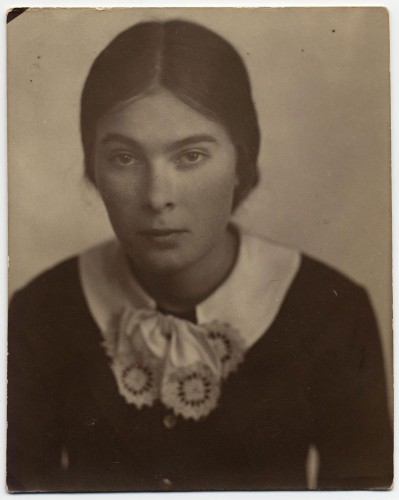
Resia Schor, c.1928

Resia and Ilya Schor, under the Magnolia tree on the grounds of the Academy of Fine Arts, Warsaw, c.1935
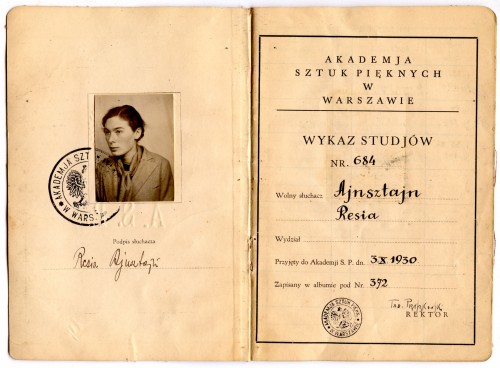
Resia Schor, Student ID, Academy of Fine Arts, Warsaw, 1930
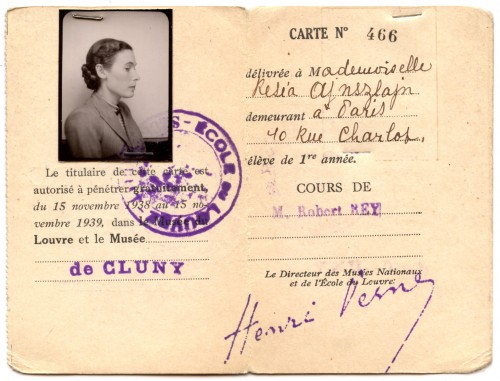
Resia Schor, Carte d”Eleve, Louvre Museum, 1938
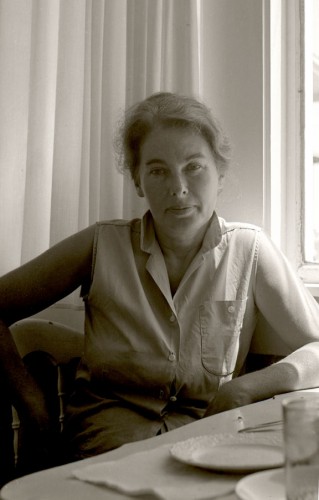
Resia Schor, Provincetown, 1960, photo: Ryszard Horowitz
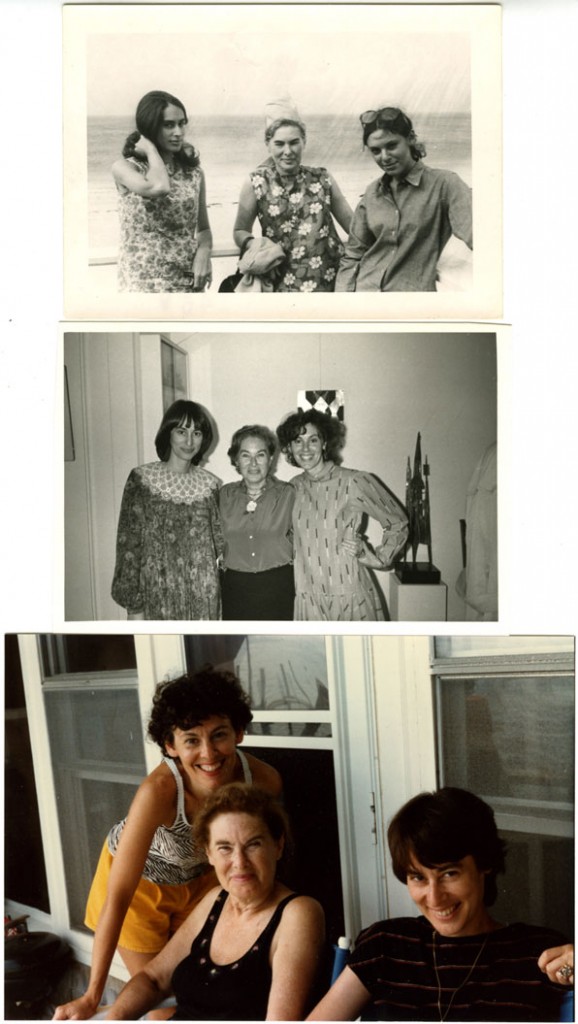
Resia Schor with Naomi and Mira, from top 1965, 1982, 1985

Richard Howard, “Jewelry by Resia Schor,” Craft Horizons, July/August, 1966
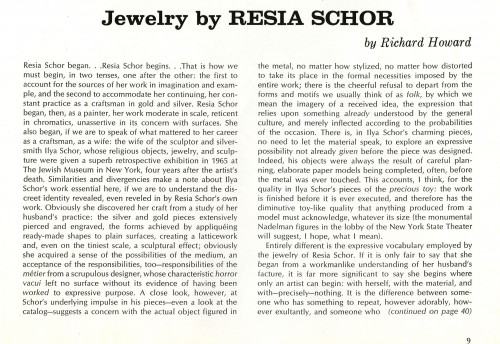
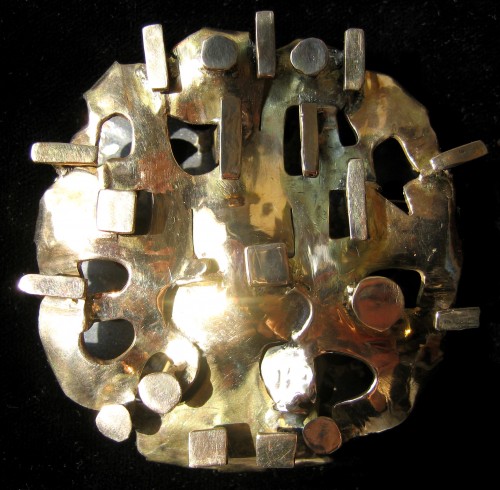
Resia Schor, Gold Pin, c. 1970

Resia Schor, 2005. Photo: Chie Nishio
